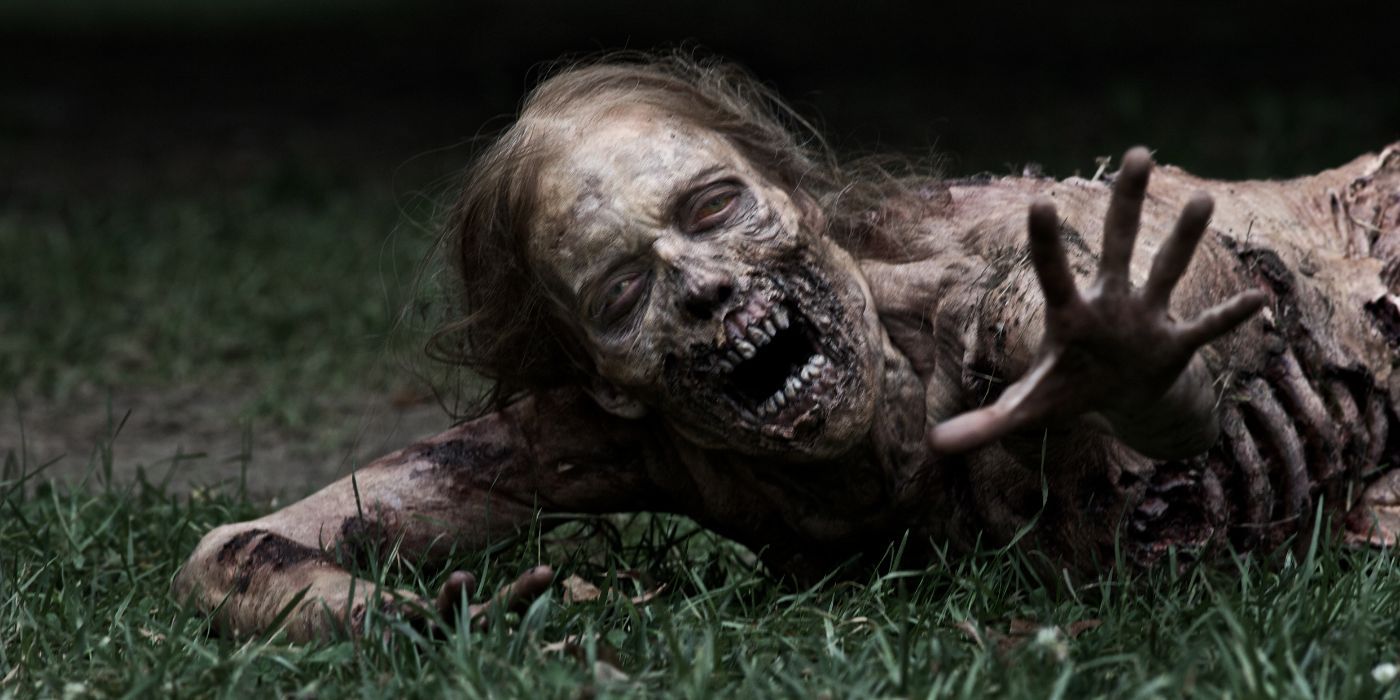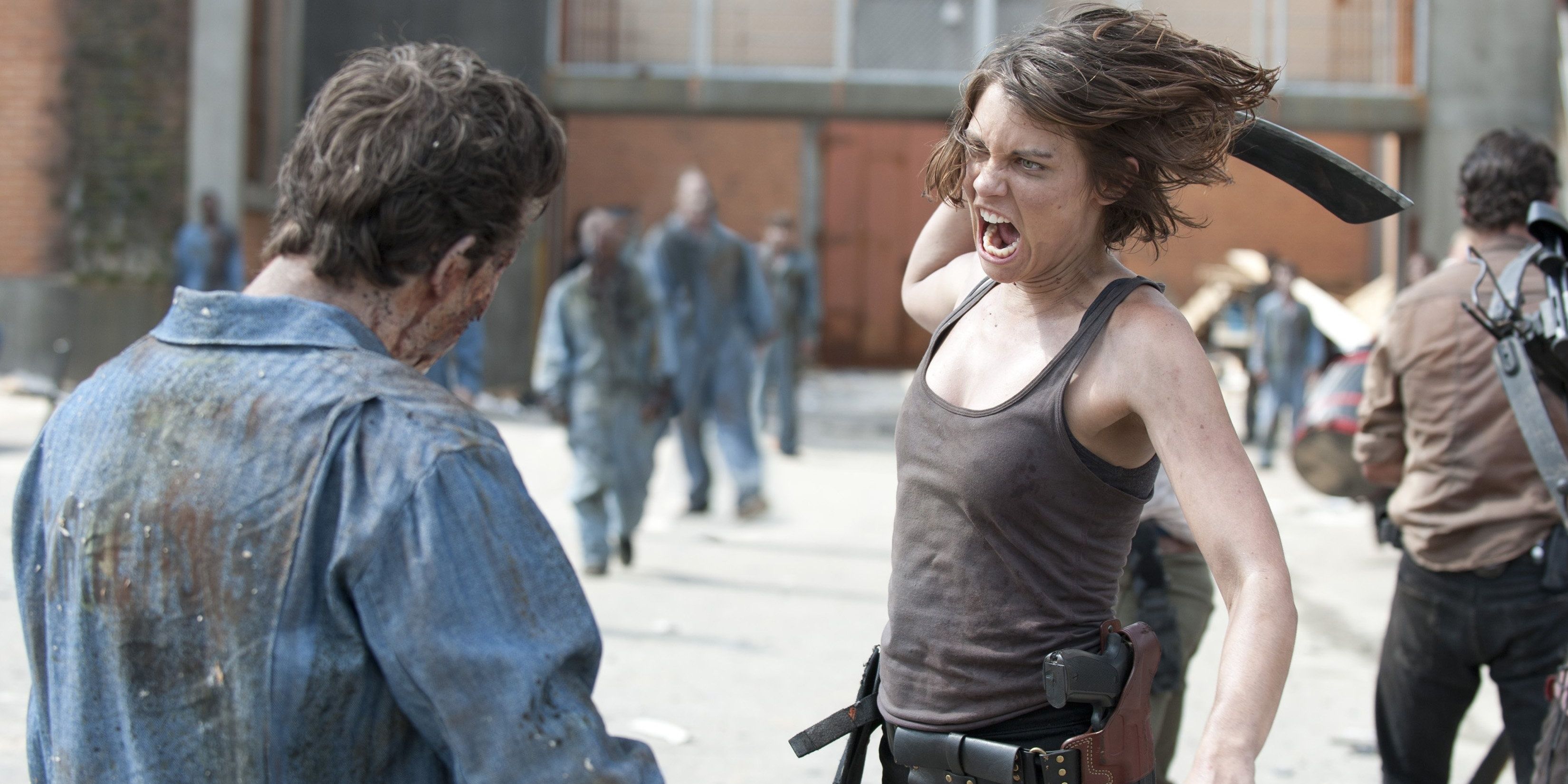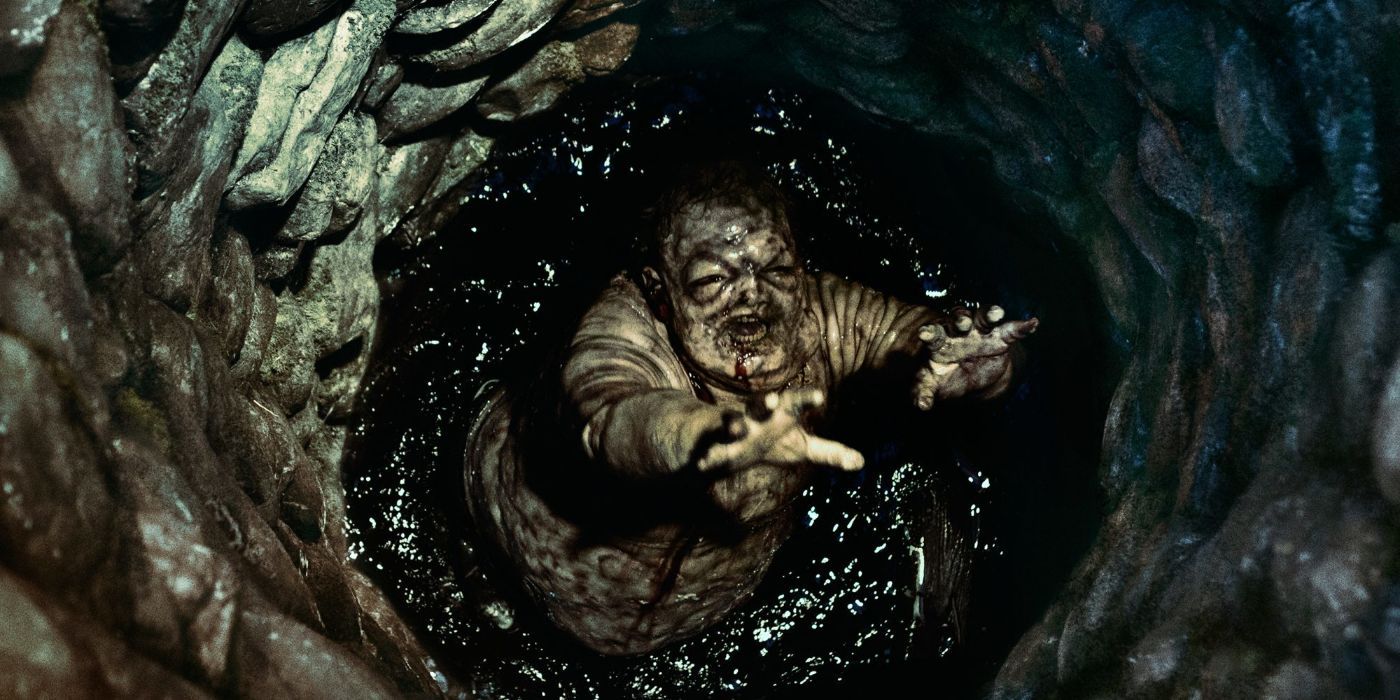Being a zombie is harder than you may think.
The walkers’ downfall lies less in their execution but rather in how they were treated. As the survivors became more adept at shoving random paraphernalia through their heads, they became less of a threat and, thus, less terrifying. While the characters were constantly developed, the walkers were left shambling. That is, until now. The final season of The Walking Dead and the new slew of spinoffs reinvigorated the terror and wariness associated with walkers. With the reinvention of walkers, Nicotero’s zombie school is finally getting the justice it deserves.
What Is ‘The Walking Dead’ Zombie School?
Every single episode of The Walking Dead has at least one walker. Between the extensive and intricate makeup that took 1-2 hours to perfect and the ample number of walkers, they couldn’t afford to be taking multiple takes – the walkers had to do it right on the first shot. In an interview with CNN, Nicotero describes the levels of makeup and prosthetics used for walkers in a hoard, from the more intensive “hero” looks that would come closer to the cameras to the rushed paint jobs playing with highlights and shadow for walkers in the background. Yet, with every face being different, there are vast arrays of custom looks and prosthetics required to pull it off. As such, to make makeup easier, one of the visual elements Nicotero looks for in auditionees is thinner people with specific bone structures to help with the rotting look.
In another interview with The Frame, Nicotero explains that the second aspect they look for in these auditions of 150-200 people is performance. While the visual aesthetic of not holding their hands in front of them while walking adds to the continuity aspect of the performance, another point was vital to the walkers. He was inspired by the achievements of Boris Karloff in Frankenstein, who managed to create a horrifying yet sympathetic character. The point is to “feel the character under the makeup.” There always had to be a sense of “what came before” that these emaciated, sunken creatures were once human. So, no, we can’t just “wake up one day and decide to be a zombie” extra on The Walking Dead. Being a walker requires a natural affinity to zombie-ness and grueling work to perfect the balance between dead and alive.
‘The Walking Dead’ Pilot Features the Biggest Successes of Zombie School

Generally, underappreciated walkers operate in the background of scenes, with good performances simply enhancing the atmosphere without ever stealing the spotlight. However, a few stellar performances have nailed Nicotero’s philosophy about how walkers should be portrayed and left a lasting impression on us. One of the prime examples of this is in the pilot, where one of the earliest walkers we see is a woman torn at the torso. Rick (Andrew Lincoln) first stumbles across her skeletal corpse as he journeys back home, with her sudden movement catching him unawares. But her true performance comes later, as Rick points his gun at her and says, “I’m sorry this happened to you.” Despite her glassy-eyed, lifeless demeanor, there is still something distinctly melancholic about her – she becomes the embodiment of lost life rather than the rotting dead.
Another effective, yet highly underused, way the show achieves this effect is by using child walkers. The “in medias res” opening of the horror pilot is confronting due to the silent face-off between the iconic little girl walker and Rick. With childlike props of the bunny slippers and the white teddy bear, combined with the pared-back makeup that left us staring into the girl’s dead eyes, her deliberate and painfully slow movements dragged out the terror induced in both Rick and us. The success of this scaled-back approach to walkers is also apparent in Sophia (Madison Lintz) as a walker in Season 2, where the maximum sympathy is elicited by minimal makeup. It’s this powerful balance that makes the walkers in The Walking Dead so successful, yet as the seasons progressed, they have increasingly gotten a bad rap.
Why Did the Walkers Scare Us Less Throughout ‘The Walking Dead?’

One of the major drawbacks of The Walking Dead was that as the seasons went on, the walkers stopped inciting fear. However, the walkers themselves never really diminished in quality, with every one of them meticulously curated to dance between the line of revolting and sympathetic. Unfortunately, it was this consistency in quality that led to their demise – while the survivors were continually growing and being developed, the walkers remained stagnant.
The survivors in the post-apocalyptic world became far more adept at dispatching walkers, and in some episodes, you would even just see characters knocking some heads off to blow off a little steam. Because the group treated them as pathetic, we did too. Walkers became almost an afterthought, a secondary threat compared to the human groups we have seen. The only time their presence would cause any concern was if there were hoards, but considering how often the characters would cover themselves in gore and stroll through them, even the hoards were rendered inferior. Even the Whisperers played into this, as they managed to survive so long in the apocalypse by wearing the faces of the walkers and herding them like they were mere cattle.
As such, whenever characters died from walker bites, it seemed unbelievable. With these originally terrifying remnants of humans reduced to something reminiscent of a staggering, mindless drunk, it felt like the group was swatting away gnats instead of taking down an enemy. How is anyone supposed to die from these things? They were still visually disgusting and toed the line of humanity, but their previously threatening nature had been diminished to pitiful. Treated with a lack of respect, the walkers fell far from their original pedestal, but there is a chance they may be regaining their stride now.
Nicotero’s Zombie School Is Finally Done Justice

Now and then, we would see a genuinely terrifying walker, from the slimy bloated walker in the well on Herschel’s farm in Season 2 to Jadis’ armored walker that Rick had to fend off while avoiding the protruding spikes. Interestingly, these walkers are played by actors who had earned the role by succeeding as background walkers. But it is finally in The Walking Dead Season 11 and the new spin-offs where the walkers become a threat to the survivors. For once, they are not only wary of any new human groups they meet but also of any walkers they come across, finally raising the ante and doing justice to the efforts of Nicotero’s zombie school.
In Season 11, we were introduced to variants, walkers who had evolved enough to start climbing fences, throwing things, or revisiting landmarks they remembered humans had been. These subtle additions seem gimmicky, but they serve an important purpose that completely revived the walkers – they finally made the survivors wary of them and thus made us too. The walkers rose from their place as an afterthought and became a genuine threat. This is amplified in the spin-offs, particularly The Walking Dead: Daryl Dixon, where we witness a new generation of walkers, including the burners and the supercharged ones. While they are a direct result of human interference in a lab, it is refreshing to actually fear walkers while in an apocalypse.
Nicotero’s and the actors’ efforts in creating dynamic walkers saw fruitful days in the early seasons of The Walking Dead, where the horror of the apocalypse was given the respect it deserved. But as the show went on, the walkers were treated as a secondary threat (or not even a threat at all), completely negating the potential given to the walkers. As such, while the zombie school did end up being slightly redundant since the walkers weren’t treated irreverently later in the show, its successes are finally in the limelight with the evolving representation of the walkers.





